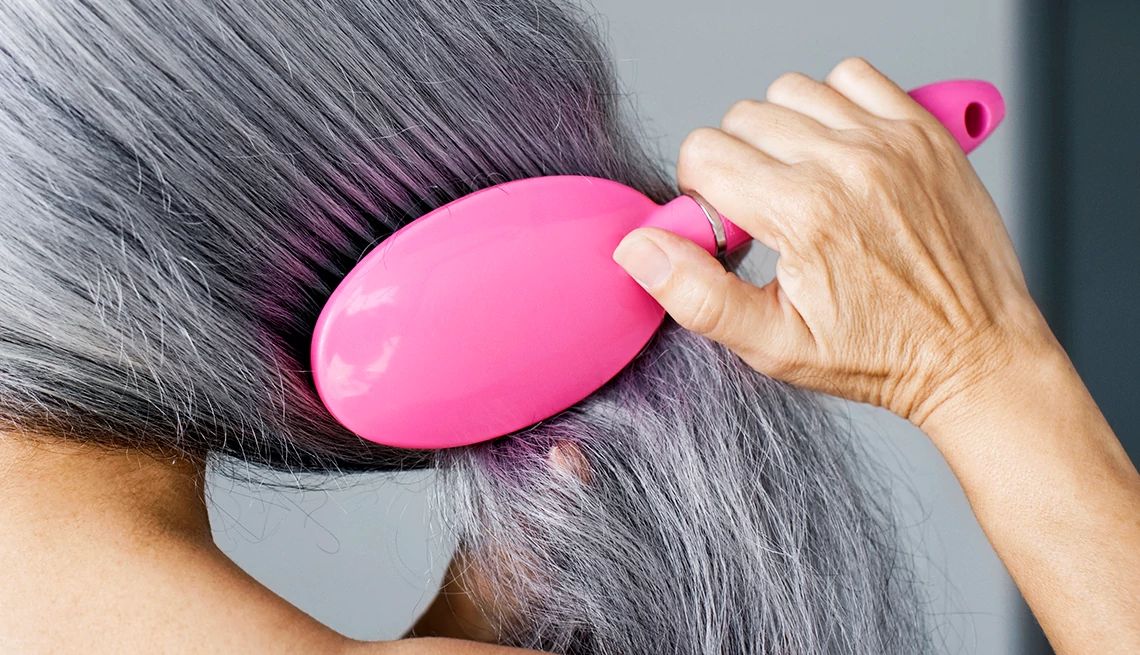AARP Hearing Center


If you’ve ever ended up with a big handful of hair in the shower, you know the panic that can instill. Suddenly, you’re analyzing the ratio of hair to scalp on your head — can you see more of your scalp than you used to? Is your part getting wider? Could you be losing your hair?
Many women experience hair loss and hair thinning as they get older, says Maria Colavincenzo, M.D., a dermatologist who runs a clinic focused on hair and scalp disorders at Northwestern Medicine. A 2022 study published in the journal Menopause found that 52 percent of postmenopausal women had hair thinning or hair loss.
Hair loss — also called alopecia — can be especially difficult for women because it isn’t as cosmetically acceptable as hair loss in men, Colavincenzo says.
“There isn’t an attractive shaved head look for women,” she says. “Women [with hair loss] go through great pains to cover it up using camouflage agents like hair powders and agents. They often feel very isolated.”
What’s normal, what’s not
While some hair loss is normal with aging, sudden or excessive hair loss, bald patches and hair loss that accompanies a rash, flaking or itchiness are not. Those can be signs of a more serious condition and should be evaluated by a doctor.
“It is a good idea to check with your dermatologist if you notice a significant amount of hair loss,” says Shoshana Marmon, M.D., assistant professor of dermatology at New York Medical College.
An accurate diagnosis is important, Marmon says, because the treatment can vary greatly depending on what is causing the problem.
Here are some of the most common reasons women lose their hair, and what you should know about each:
1. Genetics
The most common cause of hair loss among older women is called female pattern hair loss, or androgenetic alopecia.
It’s the “lady’s version” of the genetic condition that causes men to go bald, Colavincenzo says.
Female pattern hair loss is caused by inherited genes that make hair follicles shrink and eventually stop growing hair. You may notice that your part is gradually becoming wider, that your ponytail is thinner or that the hair near your temples has started to recede.
As with men, your genetics determine how badly the condition affects you. It’s rare for a woman to lose all of her hair, according to the American Academy of Dermatology.
“Unlike men who get a receding hairline or a bald spot, in women it’s often more diffuse, where the hair on the whole top area of the head is a little thinner,” Colavincenzo says.
A variety of treatments can help stop or slow genetic hair loss, including over-the-counter 5 percent minoxidil solution (Rogaine), prescription medications, laser therapy and different types of scalp injections.




































































More From AARP
Common Symptoms of Menopause and How to Treat Them
AARP research finds menopause symptoms can interfere with day-to-day lifeMedical Breakthroughs in Women’s Health
Advancements include new scans for dense breast tissue, help for hot flashes and more
6 Things Women Wish Their Doctors Told Them About Turning 50
Here are some of the big changes you should expect and what you can do about each oneRecommended for You